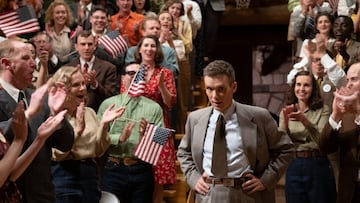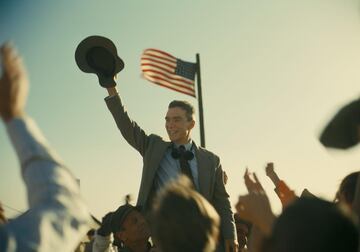CINEMA
The Oppenheimer error driving historians crazy
Christopher Nolan’s expected blockbuster is being enjoyed by many, but facing criticism by some.

It’s been a dream first week for Oppenheimer. Christopher Nolan’s new movie has closed its first weekend with more than $175 million from the box office, practically matching what it cost to make. What’s more, this is the best premiere for Nolan since the Batman releases. And although he has not won the box office battle being called ‘Barbenheimer,’ his confrontation with Barbie doesn’t appear to have taken its toll on him in terms of ticket sales.
In fact, the argument being made is that the joint release has boosted both movies and between the two they have exceeded an immediate $500 million, making it the fourth best joint premiere in the history of cinema. And as far as reception is concerned, it has fared even better than in economic matters. It has an 8.8 on IMDb and a 7.9 on FilmAffinity.
If you’ve not yet paid for your ticket, get a taste of it with this trailer.
Oppenheimer’s flawed success
But, yes, there always seems to be a ‘but’. Several keen-eyed historians from the early viewings have detected a small setting error in Oppenheimer, one that escaped Nolan and the historical advisers he consulted. The incident takes place during a scene in the final stretch of the film, when Cillian Murphy’s character comes out to give a speech after the atomic bomb has been dropped on Nagasaki and Hiroshima and the Second World War has come to an end. (Apologies if that’s a spoiler but, if so, that’s more a fault of the education system). It is a troubling sequence for many, as we watch celebrations and cheers on the back of the deaths of hundreds of thousands of innocent people. But that isn’t the controversy.

In that scene we see people waving the American flag with it’s recognisable 50 stars, each one representing a state. The movie, however, places that moment in 1945 and at that time the flag only had 48 stars. It was not until 1959 that Alaska and Hawaii were recognised as states and incorporated into the iconic national symbol.





